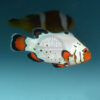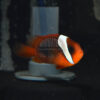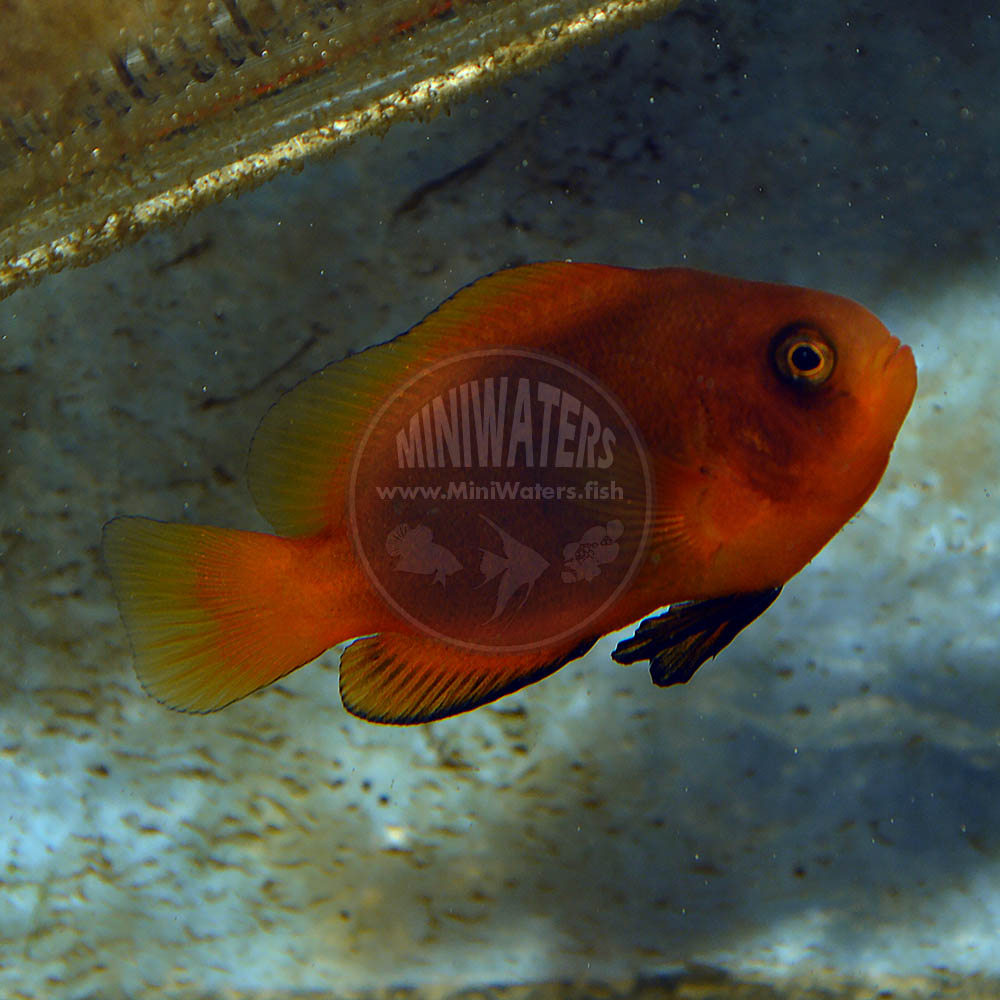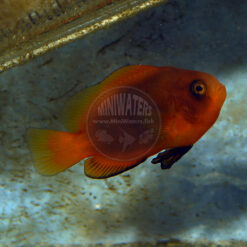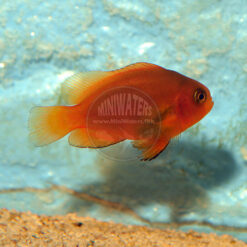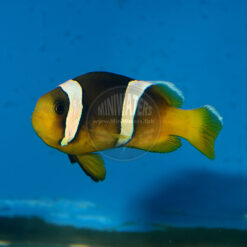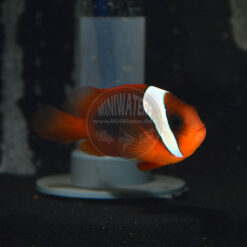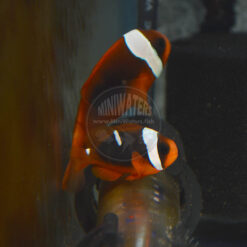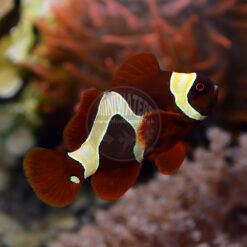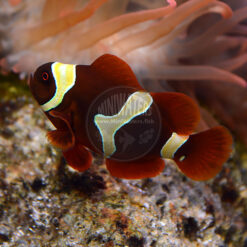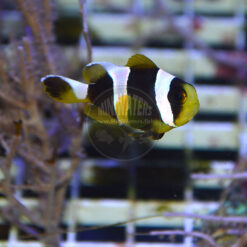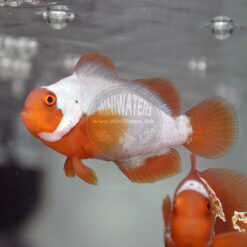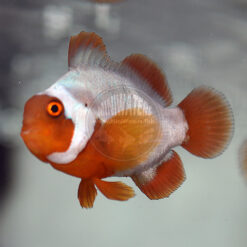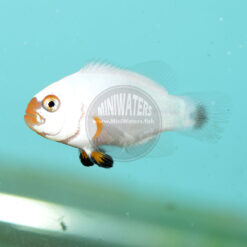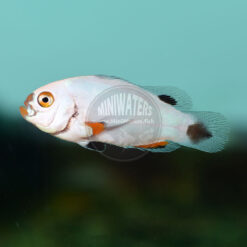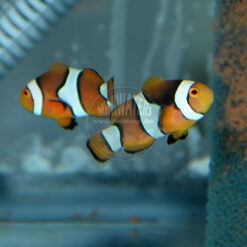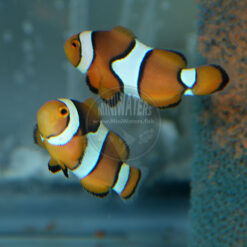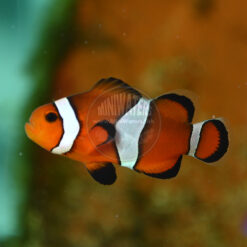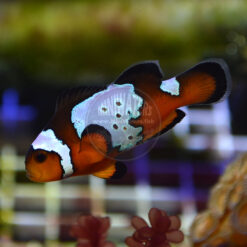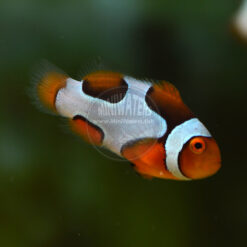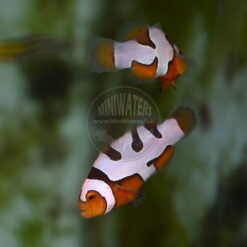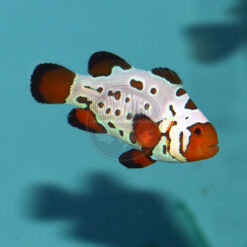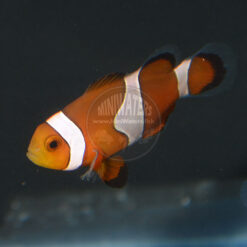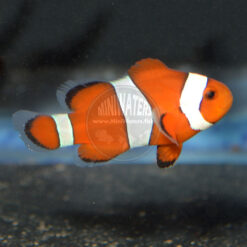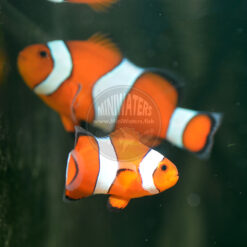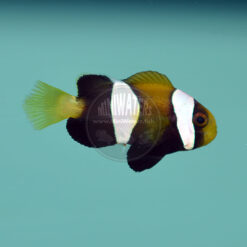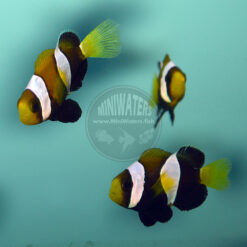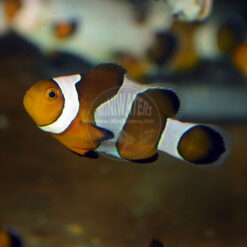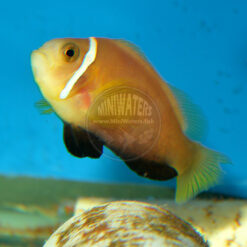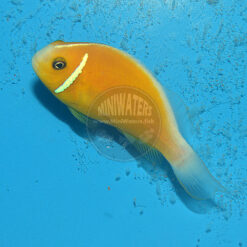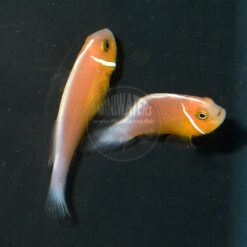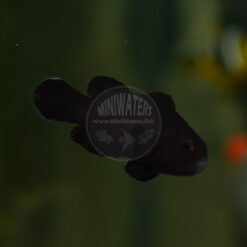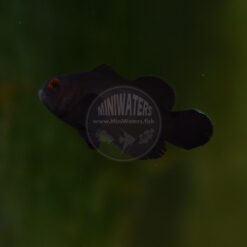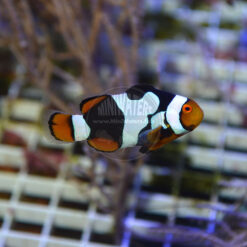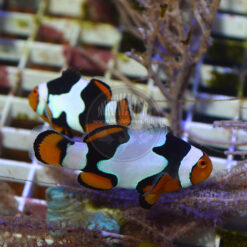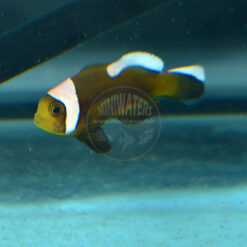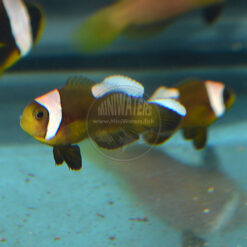Amphiprion melanopus “Coral Sea Stripeless Cinnamon Clownfish”
$29.00 – $299.00Price range: $29.00 through $299.00
The Stripeless Cinnamon Clownfish stems from a very unique population of Amphiprion melanopus found on the Great Barrier Reef in the Coral Sea. Here, there are groups of polymorphic fishes where many in the population have headstripes, but others do not. Breeding with stripeless broodstock has resulted in the overwhelming majority of offspring also being stripeless. See the description below for further information about this fascinating and unique biogeographic variant of the Cinnamon Clownfish.
Description
The Stripeless Cinnamon Clownfish stems from a very unique population of Amphiprion melanopus found on the Great Barrier Reef in the Coral Sea. Here, there are groups of polymorphic fishes where many in the population have headstripes, but others do not. The mechanism behind this variation in appearances isn’t clearly understood, but there is likely a genetic component.
This geographic variant could easily be mistaken for the Fire or Red Saddle Clownfish, Amphiprion ephippium, particularly as a juvenile. Per Matt Carberry, Sustainable Aquatics President, in a Facebook post from 2012 regarding this variant – “The occasional fish from this particular pair does have a stripe. The trick with [the Stripeless Cinnamon Clownfish] is that the pelvic fins are “late” to blacken, so it may be good to wait a bit longer to make them available for an easier differentiation between these guys and A. ephippium (fire clowns) at the retail level.”
Indeed, small 1″ Stripeless Cinnamons don’t yet show their trademark black ventral and anal fins; at this young age. At this age, do have a black margin on the anal fin, and notable black leading margins; these traits are absent in A. ephippium of the same age (and additionally, A. ephippium juveniles at comparable size normally show some level of juvenile head stripe).
At maturity, this form has black pelvic fins and mostly black anal fin, along with black flanks and red-orange tail and dorsal fin; A. ephippium has all red fins at maturity. It stands to reason that when breeding Stripeless Cinnamons, there would be a chance for offspring to show up with headstripes, a perhaps valuable throwback to the true polymorphic nature of this very unique clownfish variety.
Additional information
| Scientific Name | Amphiprion melanopus |
|---|---|
| Geographic Location | Coral Sea |
| Captive-Bred | |
| Breeder | Sustainable Aquatics |
| Sizes Available | Small, Medium, Large, Adult Pair |
| FishBase Link | http://www.fishbase.org/summary/Amphiprion-melanopus.html |
| Wholesale Available | No, Yes |
Related products
Clownfish


